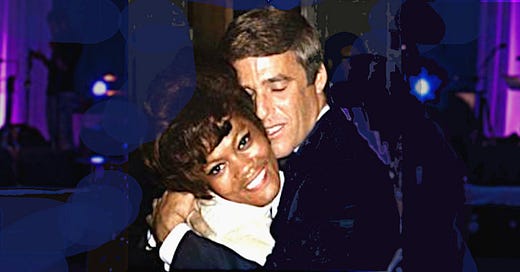CHEEK TO CHEEK
REWRITTEN FROM A CHAPTER IN MY BOOK ‘THE BUSINESS’. AVAILABLE FROM AMAZON AND ALL GOOD BOOK SELLERS.
In America, by the 1880s, a hundred years after the end of the War of Independence, there had been an influx of immigrants from Europe. Over 250,000 of these were Jews, the majority of them having fled persecution. Although most of these immigrants were well educated, there was little chance of them finding good positions in businesses that already had management in place, but the entertainment industry had vacancy signs all over it.
The entertainment business was new and there was no one at the top to object to newcomers moving in. It revolved around actors, singers, dancers, writers, and choreographers – all of them quirky, forceful and idiosyncratic. There was no room in entertainment for people who made judgments based on race or class or sexuality; the only thing that mattered was profitability.
Jews came from a non-proselytising culture. They didn’t try to convert people to their way of thinking, nor did they object to other people being themselves – the entertainment business provided them with an ideal opening. And the quickest way in was through songwriting or music publishing.
If a song became a hit it might sell thirty or forty thousand copies at 50 cents each, and with three or four hits a year a publisher could make a comfortable living. No one considered music publishing to be a profession from which one could get truly rich until 1894 when Charles K. Harris wrote ‘After the Ball’, the best-selling song ever. It sold two million copies and not only had he written it, he’d published it too.
Harris’s success prompted other amateur songwriters to follow him into music publishing. Many of them had a background in sales – Edward B. Marks, a button salesman; Leo Feist, a corset salesman; Joseph Stern, socks and neckties. They looked at songs as just another product to be sold and to begin with they wrote many of them themselves, mostly jokey pop songs in the style of the day or sentimental tear-jerkers. Not art - just a commodity.
Ultimately, what they excelled at was music publishing and by the time the 1st World War finished, America found its music industry being run almost entirely by Jews.
Whenever there were openings for new employees, whether administrative or creative, Jewish bosses usually gave other Jews preference. But although they helped their own kind first, they had no list of preference for who came second. Mostly they still believed they’d come to a land of equal opportunity and felt badly when they saw any section of society being prejudiced against. Irish were regarded equally with Italian and black equal with white. The best person got the job and black Americans tended to find work with Jewish-run companies more easily than with non-Jewish ones.
For both black and Jewish Americans the music industry was a shortcut from their individual backgrounds to a higher level of society, and although profit was its principal motive, the American music industry was mostly a force for good. For black Americans it was a doorway into mainstream American culture and the door was left open for them by the Jewish-run music industry.
Twenty years earlier, the popular music business had benefitted from the success of ragtime, which white songwriters and composers had assimilated into their own music. Now there was something new…
During the war, there’d been mass migration of blacks from the southern states to the northern cities, particularly Chicago, and with them they’d bought jazz. The Jewish run music business in northern cities seemed surprisingly enamoured of it; it appeared to engage the Jewish psyche in a way that previous styles of American music hadn’t. Perhaps it was jazz’s emotional directness, or its improvised phrases, reminding them of Klezmer dance music where instruments often mimicked the human voice singing or laughing. Either way, jazz hit a nerve with the Jewish people who ran the music business and the songwriters they employed. And the new generation of song writers were less inclined to view music as just a commodity. They took the creation of popular music seriously and enjoyed their own artistry.
By the mid 1920s, and for the thirty years that followed, most of the top popular songwriters in America were Jewish, all of them using elements of jazz in their compositions. Richard Rogers, Lorenz Hart, Irving Berlin, Jerome Kern, George Gershwin - all showed the same mix of influences – Jewish/European melody coupled with the rhythms of black America.
By the mid-1950s the ‘great American songbook’ had been created, it’s imagery was the aspirational American life-style – The Lady Is A Tramp, Lorenz Hart – Putting On The Ritz, Irving Berlin – Come Fly With Me, Sammy Cahn. And throughout all the songs, there was the distinctive instrumentation and off-beat of jazz.
It was this blend of two cultures more than anything else that created American popular music as we know it today, along with its modus operandi, the music industry.
All of us who‘ve been lucky enough to earn our living from promoting or playing popular music, or who simply love it, should know its history and learn its roots.
Jewish and black cultures dancing cheek to cheek.
CLICK SUBSCRIBE AND LEAVE YOUR EMAIL - IT’S FREE.





Excellent work!
Cui bono?